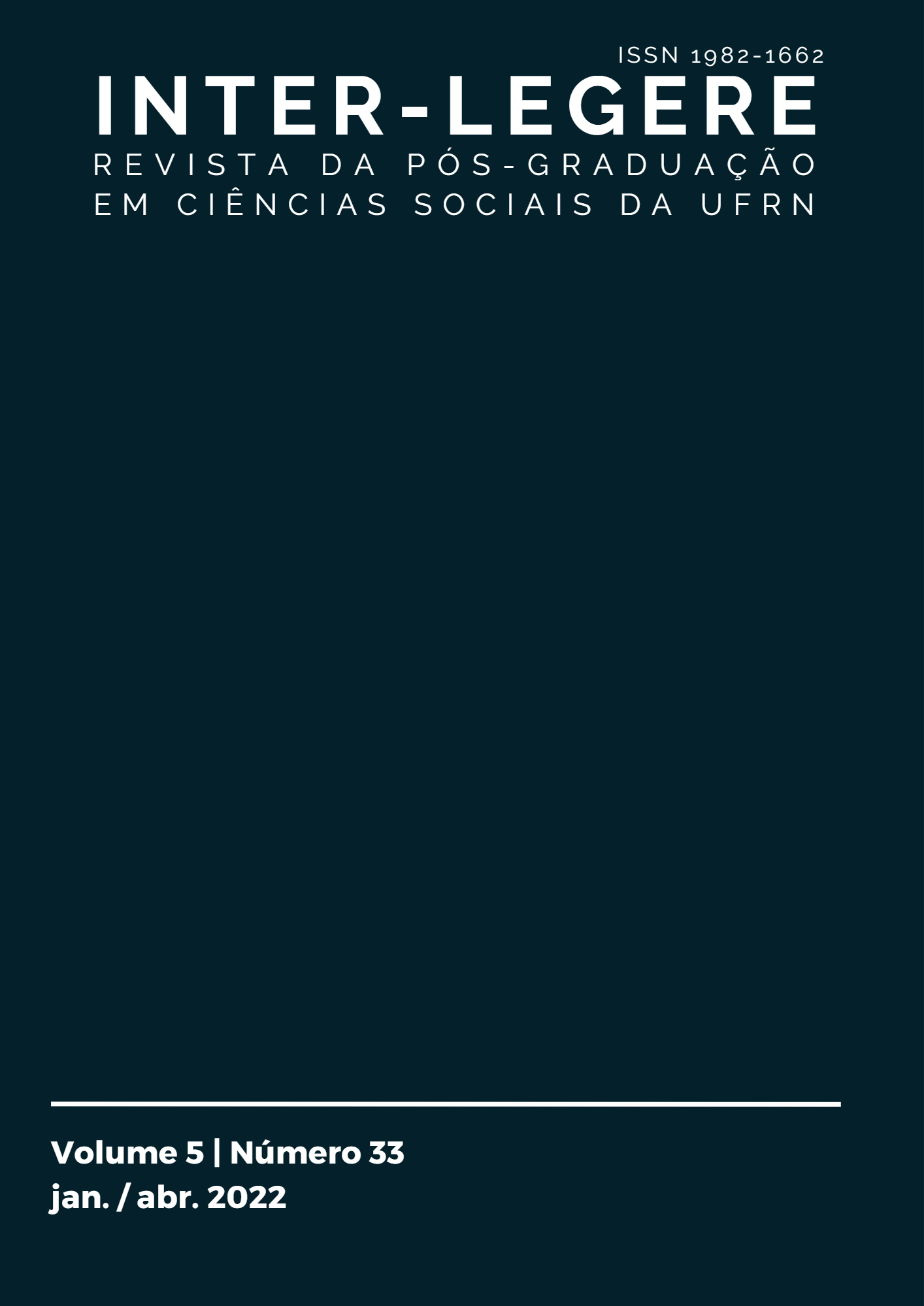Dança Humana
big story em ação
DOI:
https://doi.org/10.21680/1982-1662.2022v5n33ID25331Resumo
Conjectura-se como o estilo de vida sedentário assegura a plataforma na qual estamos ao ocupar toda a terra e desencadear a necessidade de confluência para a coesão social. Uma delas é a dança que se converte em especialidade, mas lá atrás serve como cola fundamental no tempo sem escrita. Recortar desse modo é promover a big story, a atenção para largos períodos responsáveis para a formação de padrões, e observar as alterações com consequências no panorama histórico. Atentar para o sedentarismo não elimina a necessidade de se contemplar aspectos eliciadores da cumulação cultural e o papel da imitação.
Palavras-chave: Sedentarismo. Cumulação cultural. Imitação. Dança.
Referências
AKKERMANS, Peter M.M.G. Hunter-Gatherer continuity: the transition from the epipaleolithic to the neolitic in Syria. In: AURENCHE, O.; LE MIÉRE, M.; SANLAVILLE, P. From the River to the Sea: The Paleolithic and the Neolithic on the Euphrates and in the Northern Levant. Lyon: Maison de l'Orient et de la Méditerranée Jean Poulloux, BAR International Series, 1263, 2004. p. 281-293. Disponível em: https://openaccess.leidenuniv.nl/bitstream/handle/.../951_003.pdf Acesso: 10 mar. 2012.
AMBROSE, Stanley H. Late Pleistocene Human Population Bottlenecks, Volcanic Winter, and Differentiation of Modern Humans. Journal of Human Evolution, n.34, pp.623-51, 1998.
AUNGER, Robert. A rigorous periodization of ‘big’ history. Technological Forecasting & Social Change, pp. 1- 15, 2007.
BLACKING, Jonh. Movement and Meaning: Dance in Social Anthropological Perspective.Dance Research: The Journal of the Society for Dance Research, Spring, Vol. 1, No. 1, pp. 89 - 99, 1983.
BENZ, Marion; BAUER, Joachim. Symbols of Power – Symbols of Crisis? A Psycho-Social Approach to Early Neolithic Symbol Systems. NEO-LITHICS 2/13 The Newsletter of Southwest Asian Neolithic Research Special Topic on The Symbolic Construction of Community, pp. 11 – 24, 2013. Disponível em: <http://www.exoriente.org/docs/00073.pdf Acesso em: 10.05.21.
BROWN, Cynthia.Stokes. A Grande História: do Big Bang aos dias de hoje. Tradução de Vitor Paolozi. Rio de Janeiro: Civilização Brasileira, 2010.
DAVID, Christian. Maps of Time: An Introduction to Big History. Berkeley, Los Angeles, London: University of California Press, 2003.
DIAMOND, Jared M. Armas, germes e aço: os destinos das sociedades. Tradução de Silvia de Souza Costa, Cythia Cortes e Paulo Soares. Rio de Janeiro: Record, 2013.
DIETRICH, Oliver; HEUN, Manfred; NOTROFF, Jens; SCHMIDT, Klaus; ZARNKOW, Martin Zarnkow. The role of cult and feasting in the emergence of Neolithic communities. New evidence from Göbekli Tepe, south-eastern Turkey. ANTIQUITY 86, pp. 674–695, 2012.
DUNBAR, Robin I. M.; SHULTZ, Susanne. Understanding primate brain evolution. Phil. Trans. R. Soc. B, 362, pp. 649–658, 2007.
DUNBAR, Robin. I. M. What makes the neolithic so special?. Neo-Lithics, v. 2, n. 13, pp. 25-29, 2013. Disponível em: <http://www.exoriente.org/docs/00073.pdf>. Acesso em: 20 nov. 2015.
___________________. The social brain hypothesis and its implications for social evolution." Annals of human biology 36.5, pp. 562 - 572, 2009.
___________________. The social brain hypothesis. Evol. Anthrop. 6, p. 178-190, 1998.
___________________. Neocortex size as a constraint on group size in primates. Journal of Human Evolution. 22 (6), pp. 469 – 493, 1992.
FINK, Bernhard; BLASING, Bettina; RAVIGNANI, Andrea; SHACKELFORD, Todd K. Evolution and functions of human dance. Evolution and Human Behavior, pp. 351 – 360, 16.01.2021.
FRANCIS, Sandra T.The Origins of Dance: The Perspective of Primate Evolution. Dance Chronicle, Vol. 14, No. 2/3, pp. 203 - 220, 1991.
GARFINKEL, Yosef. The Evolution of Human Dance: Courtship, Rites of Passage, Trance, Calendrical Ceremonies and the Professional Dancer. Cambridge Archaeological Journal, pp. 1 – 16, 2018.
_________________. Dancing at the Dawn of Agriculture. Austin: University of Texas Press. 2003.
________________. Dancing and the beginning of art scenes in the early village communities of the Near East and south-east Europe. Cambridge Archaeological Journal, v. 8, n. 2, pp. 207-237, set. 1998.
HAGEN, Edward; BRYANT, Gregory A. Music and Dance as a Coalition Signaling System. Human Nature, Vol. 14, No. 1, pp. 21–51, 2003.
HESKETH, Ian. The Story of Big History. History of the Present, Vol. 4, No. 2, 2014, pp. 171 - 202.
HEYES, Cecilia; BRASS, Marcel. Imitation: is cognitive neuroscience solving the correspondence problem? Trends in Cognitive Sciences, Novembrer, 9(10), pp. 489 -495, 2005.
HOLE, F. Agricultural sustainability in the semi-arid Near East. Clim. Past, 3, pp. 193 –203, 2007. Disponivel em: <http://www.clim-past.net/3/193/2007/ Acesso em: 01 mar. 2012.
HUXLEY, Julian Sorell. Introduction. Philosophical Transactions of the Royal Society of London. Series B, Biological Sciences, Vol. 251, No. 772, A 29 December 1966.
KLEIN, Richard G.; EDGAR, B. (Colaborador). O Despertar da Cultura: A Polêmica Teoria sobre a Origem da Criatividade Humana. Tradução de Ana Lúcia Vieira de Andrade. Rio de Janeiro: Jorge Zahar, 2004.
LALAND, Kevin; WILKINS, Clive; CLAYTON, Nicky. The evolution of dance. Current Biology 26, R1 – R21, R5 – R9, January 11, 2016.
LALAND, Kevin N.; BATESON, Patrick. The Mechanisms of Imitation.
Cybernetics and Systems An International Journal, Volume 32 - Issue 1-2, pp. 195 -224, 2001.
LEGARE, Cristine H; NIELSEN, Mark. Ritual explained: interdisciplinary answers to Tinbergen’s four questions. Phil. Trans. R. Soc. B, pp. 1 – 5, 375: 2020.
McELREATH, Richard; HENRICH, Joseph. Modeling Cultural Evolution. In: DUNBAR, Robin; BARRET, Louise (editores), Oxford Handbook of Evolutionary, pp. 571 – 586, 2006.
MCCORRISTON, J.; HOLE, F. The Ecology of Seasonal Stress and the Origins of Agriculture in the Near East. American Anthropologist, New Series, Vol. 93, N0. 1, mar., pp. 46-49, 1991.
MCNEILL, William H. Cosmopolitanism and ritual movement. The Hedgehog Review, vol. 11, no. 3, p. 113, 2009.
__________________.Keeping Together in Time. Dance and Drill in Human History. Cambridge: Harvard University Press, 1995.
MITHEN, Steven. The Singing Neanderthals: The Origins of Music, Language, Mind, and Body. London: Weidenfeld and Nicolson, 2005.
_______________. A Pré-História da Mente: Uma busca das origens da arte, da religião e da ciência. Tradução de Laura Cardellini Barbosa de Oliveira. São Paulo: Unesp, 1998.
MURCHO, Desidério. A Linguagem. Estado da Arte, O Estado de S. Paulo, 24.04.21. Disponível em: Linguagem - Estado da Arte (estadao.com.br) Acesso em: 24.04.21
PAGEL, Mark. PAGEL, Mark. Infinite Stupidity: A Talk With Mark Pagel. 12.15.11 Disponível em: Edge.org. Acesso em: 24.05.21.
________________________. Adapted to culture. | VOL 482 | NATURE | 297 - 299, 16 FEBRUARY 2012.
PETRAGLIA, Michael; SHOAEE, Mohammad Janad; NASAB, Hamed Vahdati. The Paleolithic of the Iranian Plateau: hominin occupation history and implications for human dispersals across southern Asia. Journal of Anthropological Archaeology, volume 62, june, 101292, 2021.
PINKER, Steven. Tábula Rasa. A negação contemporânea da natureza humana. São Paulo: Companhia das Letras, 2004.
RUSSEl, Nerissa; McGOWAN, Kevin. Dance of the Cranes: Crane symbolism at Çatalhöyük and beyond. Antiquity 77(297), pp. 445- 455, September 2003.
SACHS. Curt. A Neglected Branch of Musicology: The Dance. Bulletin of the American Musicological Society. No. 3, Apr., 1939. pp. 9-10.
SHEETS-JOHNSTONE, Maxine. Man Has Always Danced': Forays into the Origins of an Art Largely Forgotten by Philosophers. Contemporary Aesthetics.org. 16 fevereiro de 2006. Disponível em: http://www.contempaesthetics.org/ Acesso em: 10 mar. 2012.
TARR, Bronwyn; LAYMusic and social bonding: “self-other” merging and neurohormonal mechanisms. Frontiers in Psychology, 30 setembro 2014.
WATKINS, Trevor. The Epipalaeolithic-Neolithic as the pivotal transformation of human history, Documenta Praehistorica XLV , 2018, pp. 2 – 16.
________________When Do Human Representations Become Superhuman Agents? In:
BECKER Jörg (Eds.); BEUGER Claudia (Eds.); MÜLLER-NEUHOF Bernd (Eds.), Human Iconography and Symbolic Meaning in Near Eastern Prehistory, Proceedings of the Workshop held at 10th ICAANE in Vienna, April 2016, pp. Verlag: VÖAW. Reihe: OREA - Oriental and European Archaeology , Band: 11 Jörg Becker
Claudia Beuger
Bernd Müller-Neuhof, Series: OREA, 2019, Published by: Austrian Academy of Sciences Press
________________. Neolithisation Needs Evolution, as Evolution needs Neolithisation. NEO-LITHICS v. 2, n. 13, 2013, pp. 5 - 10, 2013. Disponível em: http://www.exoriente.org/downloads/neolithics.php Acesso em: 20. Mar. 2019.
________________. Household, community and social landscape: building and maintaining social memory in the early Neolithic of southwest Asia. In: FURHOLT, Martin; HINZ, Martin; MISCHKA, Doris (Eds), As Time Goes By’landscapes and the temporal perspective. Bonn: Verlag, p. 2012.
________________. Changing People, Changing Environments: How Hunter-Gatherers became Communities that Changed the World. In: FINLAYSON, B.; WARREN, G. (Ed.). Landscapes in Transition. Oxford; Oakville: Oxbow Books, 2010. pp. 106 - 114. (Série Levant Supplementary, v. 8.
_________________. Urban and natural landscapes of an ancient Syrian capital: settlement and environment at Tell Mishrifeh/Qatna and in central-western Syria. ANTIQUITY 83 (320), 548, 2009.
WILSON, Edward O. A Conquista Social da Terra. Tradução de Ivo Korytovisk. São Paulo: Cia. Das Letras, 2013.
Downloads
Downloads
Publicado
Como Citar
Edição
Seção
Licença
Copyright (c) 2022 Marcos Bragato, Thiago Chellappa, Douglas Araújo

Este trabalho está licenciado sob uma licença Creative Commons Attribution-NonCommercial-ShareAlike 4.0 International License.


 Português (Brasil)
Português (Brasil) English
English Français (Canada)
Français (Canada) Español (España)
Español (España)





